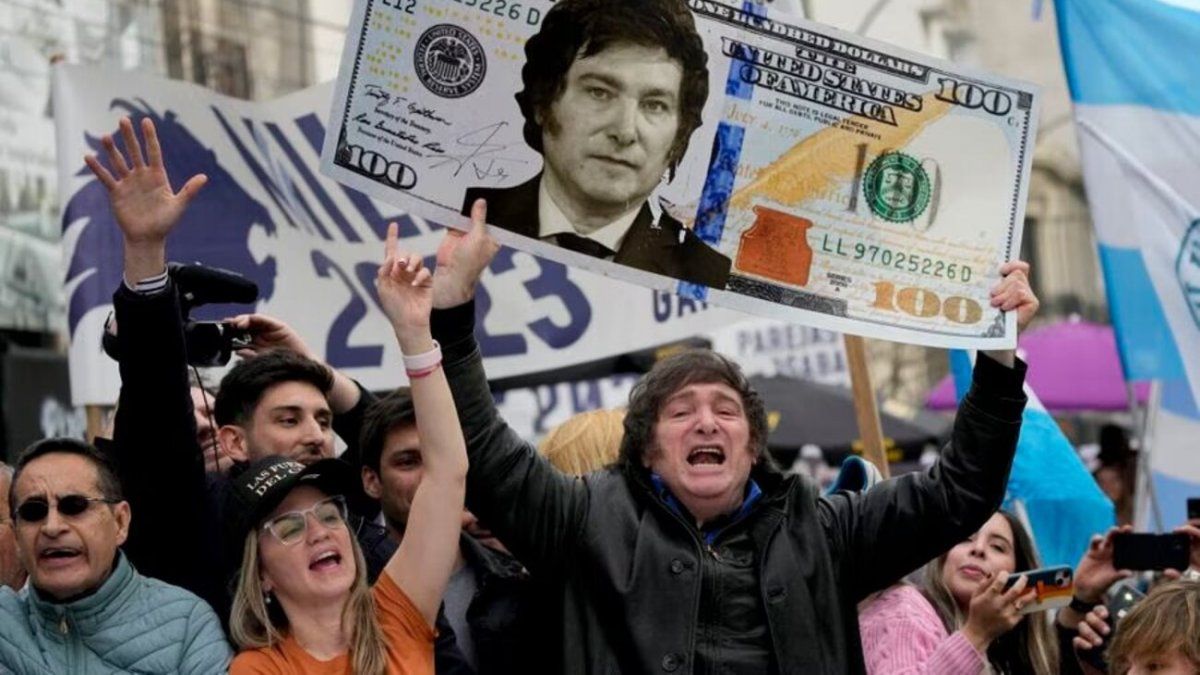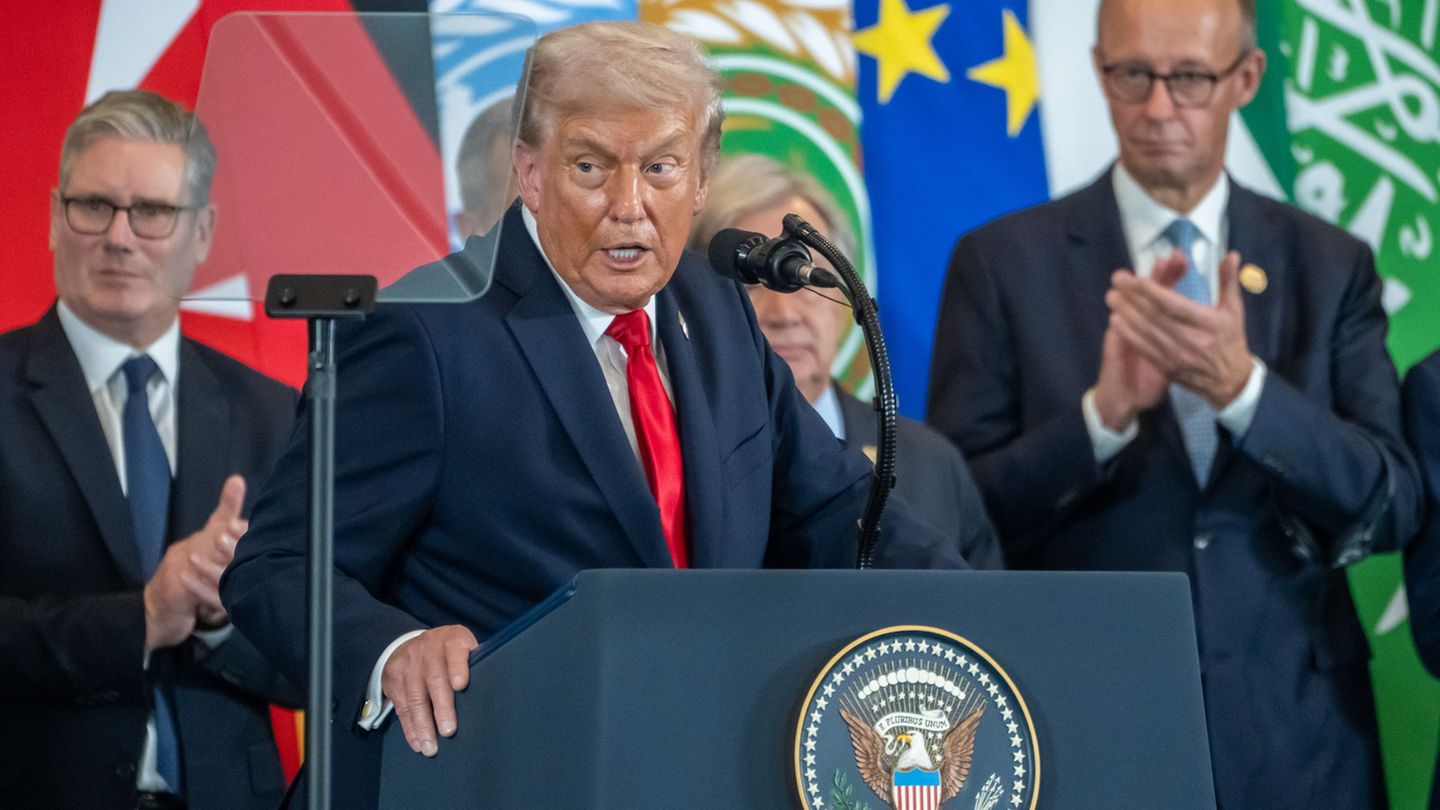While the cryptocurrency ecosystem $ Pound Its international expansion continues, Judge Arroyo Salgado spoke about it, noting that President Milei’s tweet granted credibility to said digital asset. In the economic field, the Blue dollar He recorded an increase in his price last Thursday, while ADRS and bonds suffered a strong fall, and the country risk rose by 5%, in a context of adverse international markets.
In the productive level, the use of installed capacity in Argentina reached only 55%. In the political and social sphere, the Minister of Security, Patricia Bullrich, declared that the policeman who triggered a Granada against Pablo Grillo will not be investigated, while the CGT announced a 24 -hour general strike, scheduled before April 10. Finally, the anguish that caused the storm recorded last Friday in the city of Bahía Blanca continues.
The streets of Buenos Aires burned in a protest of retirees that left several serious injuries, an event that marks a break in the tense calm that the government tried to hold with its exchange anchor strategy. While the police brutally repressed the protesters who demanded the payment of decent assets, the financial markets throb before an undeniable truth: the stability model imposed from the Casa Rosada is running out of oxygen.
With red reserves, still high inflation and a labor market in full adjustment, social pressure begins to reach dangerous levels. The Government of Javier Milei has built a delicate balance based on the financial containment plagued by regulations and interventions, the overvaluation of the weight and the artificial control of inflation, but the crack is enlarged. The episode of violence against retirees is only the initial spark of a fire that threatens to consume the last quota of confidence in the model.
In this article, we analyze how the artificial stability of the government could lead to a collapse similar to that of 2001 or the uncontrolled exchange crisis that Argentina lived in 2018, when Sturzenegger, Caputo and Macri tried to stop the inevitable running for help to the IMF and taking desperate measures. Are we days, weeks or months of an adverse outcome? Can shipwreck be avoided or lucky is already thrown?
Economic policy and stabilization
The government has reduced the monthly devaluation rate from 2% to 1% with the aim of breaking inflationary inertia and sustaining the stability of the nominal exchange rate. In addition, it has been intervened in salary negotiations to limit increases to a range of 0.5% to 1% monthly and the tariff adjustment in public services has been slowed. In turn, the reduction of tariffs and the appreciation of the weight have contributed to reduce imports, which exerts a downward pressure on inflation.
However, exchange stability has been sustained through a high intervention of the State in financial markets, including the maintenance of the exchange rate, the application of the “Blend” scheme and the regulation of the market for weights and local debt. This strategy inhibits spontaneous market adjustments and generates macroeconomic inconsistencies, particularly in monetary and exchange rate.
Impact on the balance of international payments and reserves
The current account deficit has been aggravated by the appreciation of the real exchange rate (TCR) and the commercial opening policy, which has increased the demand for imported goods. In January 2025, the current account deficit amounted to US $ 1,656 million, driven by a tourism spending boom. The Net International BCRA reserves continue in negative terrain, located in (-U $ 499 million), and considering debt matches, this figure could reach (-u $ 7,480 million.)
The impact of the money laundering, which since June 2024 had contributed US $ 11.6 billion to gross reserves and $ 4.1 billion to net reserves, has been in the exhaustion phase. Without access to external financing, the BCRA continues to intervene in the change market to avoid an extension of the exchange gap.
Public Debt Dynamics
The fiscal surplus registered in January 2025 has allowed to maintain the sustainability of the debt in the short term. However, treasure debt in pesos continues to increase at rates higher than inflation, depending on a demand for financial instruments tied to the continuity of the exchange rate. Additionally, the capitalization of interest has quintupled the fiscal surplus, which raises doubts about the sustainability of the current financing strategy, taking into account that it is offering higher rates so that renewals occur.
The agreement with the International Monetary Fund (IMF) appears as a key factor to avoid a financial crisis before the October 2025 elections. A disbursement of US $ 17,000 to 20,000 million is expected, which would allow to repurchase non -transferable letters of the BCRA and strengthen reserves. However, this mechanism implies an increase in debt with the IMF, which already amounts to US $ 41,000 million.
Political situation and international reactions
In the political sphere, the speech of President Javier Milei in Davos has generated criticism for his confrontational tone. Likewise, the scandal related to the crypto-staple $ libra and the appointment of judges in the Supreme Court by decree of necessity and urgency (DNU) have caused a strong institutional rejection. The international press has highlighted these events, pointing to Argentina for its political controversies rather than for its economic advances.
Poselectoral or pre -electoral challenges?
We don’t know. The agreement with the IMF would allow the Government to sustain stability to the elections (Ceteris Paribus), but before or after the elections new challenges will arise. Among them, the need to lift the exchange rate, adopt a flexible exchange rate and establish a clear monetary goal. In addition, a series of structural reforms in the work, fiscal and pension are required to guarantee long -term economic competitiveness.
Deductions
Although the stabilization strategy has managed to reduce monthly inflation, it has not broken the 2%barrier, the appreciation of the exchange rate and the stiffness of government interventions have generated new macroeconomic imbalances. The main challenge lies in the sustainability of this economic model during the next months, before or after the presidential elections.
Argentine economic history is crowded with ignored signals that preceded each crisis. In 1989, it was uncontrolled hyperinflation; In 2001, unsustainable convertibility and unemployment explosion; In 2018, the erroneous belief that the dollar could be tamed with debt and high interest rates. Today, the signals are in sight: an overvalued weight, reserves in free fall, a tense debt market and a social pressure that turns on as a gunpowder.
The collapse can reach many ways: an uncontrollable exchange run, a social uprising that forces the government to recalculate its strategy, or a collapse of the markets that leads to economic policy to a point without return. 2001 taught us that apparent stability can collapse from one day to the other. 2018 showed us that the markets, once they smell blood, attack mercilessly. Argentina approaches dangerously to a perfect storm.
The country faces two paths: react before disaster or surrender to the fatality of history. But one thing is safe: if the crisis explodes, there will be no anesthesia. It will be chaotic and devastating. The question is no longer whether there will be a new collapse, but how soon it can come.
Director of Esperanza Foundation. Postgraduate professor at UBA and private universities. Master in International Economic Policy, Doctor of Political Science, author of six books.
Source: Ambito
David William is a talented author who has made a name for himself in the world of writing. He is a professional author who writes on a wide range of topics, from general interest to opinion news. David is currently working as a writer at 24 hours worlds where he brings his unique perspective and in-depth research to his articles, making them both informative and engaging.




